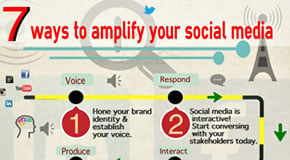Marketers are always trying to find and maintain the captive audience. The more that audience is paying attention, the more likely they’ll receive a message. As marketers continue to adjust to the way technology is increasingly integrated into our day-to-day lives, they should ask themselves this question: Can an audience be any more captive than someone staring at a handheld electronic device for two hours a day?
According to a recent Business Insider (BI) report, those who own smartphones spend 127 minutes each day glued to mobile apps, a number which towers over the amount of time spent surfing the Web on the same devices. But think about it: As an advertiser, you’ve got someone staring at a glowing screen a few inches from their face, using their fingers to be entertained by the device in whatever way. Ask yourself the question again: Does it get any more captive than this?
As Americans consume less television, radio and print advertisements, they consume more and more media through mobile devices. Research provided by eMarketer shows the percentage of time spent on mobile devices—compared to television, the Web, radio and print—increased 300 percent from four to 12 percent between 2009 and 2012. Correspondingly, the percentage of money spent on mobile advertising enjoyed a noteworthy 500 percent bump from 0.3 percent to 1.6 percent during that same time period.

This all means that marketers are increasingly willing to capitalize on this devoted attention. According to eMarketer, about $2.61 billion was spent on mobile advertising in the United States alone in 2012. By 2016, that number’s projected to explode to $12 billion.
These statistics indicate that marketers are beginning to not only notice the mobile trend, but they’re embracing it as well. Next time you’re scrolling through your Facebook news feed on your iPhone, for example, notice how frequently promoted ads appear almost camouflaged between the posts by your friends. You’re actively reading what your friends are posting, so marketers are likely correct in assuming you’re at least paying a little more attention to their purchased Facebook ads than you would to say a print advertisement in a newspaper.
Marketers: Keep the thought of a consumer actively staring at and interacting with their smartphone in mind. What kind of content does that person want to read? What kind of content does that person want to engage with? What kind of content does that person want to share?
Those who figure out the answers to these questions put themselves in financially lucrative positions.
Edited by
Carrie Schmelkin















